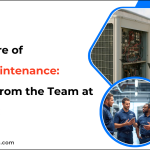In the dynamic world of business, nothing operates in isolation. From suppliers to competitors, customers to external economic forces, every element plays a role in shaping a company’s trajectory. Slot gacor hari ini business is not a solo endeavor but a complex web of relationships and influences. Success lies not in avoiding this interconnectedness but in understanding and leveraging it to your advantage.
The Web of Relationships: Beyond Transactions
Think of business as an intricate spiderweb. A single strand—whether it’s a supplier contract or a customer review—can influence the entire structure. Suppliers provide the lifeblood of operations: raw materials, products, or services. When a supplier falters, the ripple effect can disrupt production lines, delay deliveries, and ultimately erode customer trust. Maintaining strong supplier relationships ensures a steady foundation.
Yet, suppliers aren’t just vendors; they’re potential partners. Collaboration with suppliers often leads to innovations like cost-saving manufacturing processes or eco-friendly materials. The best businesses treat suppliers as allies, not mere providers, fostering mutual growth.
Competition: The Push to Innovate
It’s easy to see competitors as adversaries, but they’re more than just rivals—they’re catalysts for improvement. Healthy competition drives innovation, encouraging businesses to refine products, improve services, and enhance customer experiences.
Take, for example, the tech industry. Rivalries between giants like Apple and Samsung have resulted in groundbreaking technologies that have revolutionized how we live and work. This competition benefits not only the companies involved but also the customers who reap the rewards of better products at competitive prices.
But the interconnectedness doesn’t stop there. Competitors can also become collaborators in times of crisis or when addressing shared industry challenges. Co-opetition—collaboration between competitors—has emerged as a strategy in industries like tech and pharmaceuticals to tackle large-scale issues like cybersecurity or vaccine development.
The Role of External Forces
Even the most carefully nurtured internal relationships can be impacted by external forces. Changes in government policies, shifts in consumer behavior, or economic downturns can reshape an industry overnight. Businesses must remain agile, constantly scanning their environment and adapting to new realities.
For instance, consider the rise of e-commerce. As consumer slot88 preferences shifted towards online shopping, businesses that quickly adapted—building robust digital storefronts and efficient delivery networks—thrived. Those that resisted the change faced declining revenues and irrelevance.
Similarly, global crises like the COVID-19 pandemic underscored the interconnectedness of the business world. Supply chain disruptions, labor shortages, and changes in consumer demand highlighted how external forces could ripple through industries, reshaping the global economy.
Harnessing Interconnectedness for Growth
Success in business doesn’t come from isolating oneself but from weaving stronger, more resilient connections within this web. Here’s how businesses can thrive in this interconnected world:
- Cultivate Strategic Partnerships: Building relationships with suppliers, distributors, and even competitors can open doors to shared resources, innovation, and growth.
- Stay Customer-Centric: Listening to customer feedback and adapting to their needs ensures relevance and loyalty.
- Adapt and Evolve: Monitor external forces—market trends, regulations, and technological advancements—and be ready to pivot.
- Embrace Collaboration: Don’t shy away from working with competitors or other businesses to tackle industry-wide challenges or explore new opportunities.
A Unified Vision
Ultimately, success in business lies in recognizing that no entity operates alone. Each decision, each relationship, and each external factor contributes to the whole. When businesses acknowledge and embrace this interconnectedness, they move from merely surviving to thriving.
The dynamic web of relationships in business is not a challenge to overcome but an opportunity to harness. By understanding the interconnected forces at play and working collaboratively within them, businesses can shape a future of sustained success and innovation.
Lynn Martelli is an editor at Readability. She received her MFA in Creative Writing from Antioch University and has worked as an editor for over 10 years. Lynn has edited a wide variety of books, including fiction, non-fiction, memoirs, and more. In her free time, Lynn enjoys reading, writing, and spending time with her family and friends.















